Type C/UP trucks
123456
123456
|
Whoa. It occurs to me that all those estimates I made of 52" wheelbase become 48" exactly if the UP truck wheels were actually 24" instead of 26 as I assumed. As I noted before, the Litchfield truck must have 24" wheels if it is 48" wheelbase, and Michael's computer tells us that the UP truck was the same. So, could it be that the truck in the much later photo of the flanger had 24" wheels originally that had by then been replaced with larger ones, probably the only available by that time?
What do you think, Michael? by the way- thanks- Sketchup. yes, that's the same method I've been using by hand, I'll look into it. John
John Greenly
Lansing, NY |
|
In reply to this post by Ron Rudnick
That's great! the check is in the mail, as they say.
John
John Greenly
Lansing, NY |
|
Here's how I do it...
Match the photo.... 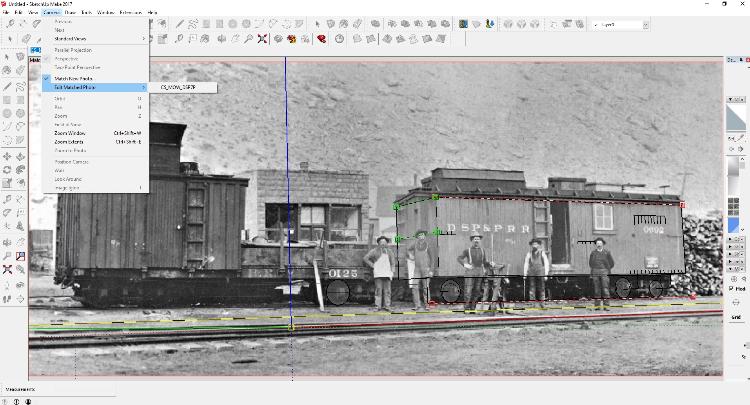 Trace the photo. And then, if you wish to scale it, you select everything and make it a "component". 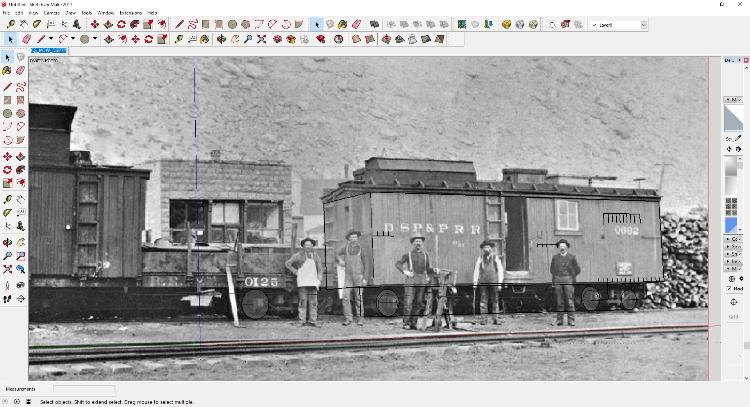 copy and paste the component elsewhere in the workspace (select "move" and then press the [ctrl] key so it will copy the part instead of simply move it. Add dimensions and then scale it up until the dimensions match. In this case, I used the ratio of the car's width to slightly wider than the 3' gauge to locate the plane in which the wheels are located. Then, after locating them based on the journal boxes (not perfect for the centers of the wheels, but correct for their relative spacing), I extended these points out to the plane of the car sides and extended those lines upwards. I took the board spacing from the left end and moved it down the length of the car to the end with the exposed truck. I did get ~24" for the wheels in that photo. For HOn3, we could do 24" wheels, but Kadee only makes 26" so we'd need a different source. My last trip to Denver, 4.5 years ago, I attempted to purchase some 24" HOn3 wheelsets or Blackstone wheelsets, but they were out of stock. This isn't an issue for On3. In fact, I've actually experimented successfully with remounting Kadee's 24" On30 wheels onto new axles for nicely detailed metal On3 wheelsets. I used styrene tubing and brass rod to create doulble insulated shoulder axles. 
|
|
In reply to this post by Dave Eggleston
Dave:
I never got up the hill to inspect that equipment: the cars I inspected and trucks I measured were behind the 2-8-0 and were under passenger cars. Looks like I missed some more interesting stuff. Phil |
|
In reply to this post by Al Pomeroy
Hi Al,
No problems yet with the Form 3. I have just printed a number of experimental parts to see how the different dpi formats print. I have had no problems so far (knock on wood). Rick |
|
This post was updated on .
In reply to this post by Michael York
Michael,
the only 24" wheelsets I can find in HOn3 are from NWSL. I have some that I've used for locomotive lead truck wheels. They are actually a bit undersized, about 23 1/2". The NWSL pointed axle HOn3 wheelsets are listed as having a 2mm diameter, .760" long axle, or 66" in HO scale. That's extremely long. There's a photo on p.27 of Grandt Vol. VII, shows a wreck in 1902 with trucks scattered all over the place. One truck is seen almost end-on, and measuring from that, I find that the extreme width across the journal boxes is just about 66". Michael, does that agree with your truck design? If that's right then the NWSL axle wouldn't work unless the truck was widened a good bit beyond scale size. Besides that, the NWSL wheel treads are wider than the Kadees, they don't have ribbed backs, and they cost twice as much. I also measured the prototype wheel diameter from that wreck photo. Scaling from Phil's notes showing 8.5" height for the journal box, I get a good measure of the adjacent wheel, limited only by the printed photo resolution. I also did it by scaling from the 36" gauge, and the two measures agreed. I get 25 3/4", +/- 3/4". So by 1902, at least some of the UP trucks had 26" wheels. Getting back to HOn3 choice, the Kadees are actually about 25 1/2" at the outside edge tread diameter. All things considered between the two, I'd stick with the Kadees, especially given that I'm modeling the early C&S, not before. John
John Greenly
Lansing, NY |
|
The dimensions for the journal boxes are currently set to 47" from back to back (along the axle), and the distances between the fronts along the axis of the axle are 67" at the top of the journal, 71" at the widest point (ignoring the lid).
I like designing everything for 26" wheelsets. In On3 or Sn3, we can always choose to use a smaller size. Price, availability, performance, and looks are what we want...and the Kadees are a nice combination of those attributes for HOn3. I thinking about spreading out the HOn3 brake shoes just slightly to allow for the slop I've left in for the axles. I'm trying to decide how much clearance to try this time. I used a 55deg axle cone based on RPs or Ss...I think. I might try printing a few different variations to experiment with how much clearance is desirable. A beautiful thing about 3D printing, mistakes in the "tooling" are easier to fit than with other techniques. The test prints are postponed until I can check what Phil posted against my models, as well as to see what Randy turns up. |
|
Michael,
that all sounds perfect. Kadees it is. My two cents about brake shoe clearance is that as long as you can't see daylight through between the shoe and the wheel flange it looks fine and works well. So with the big flanges on HOn3 wheels, .015" clearance for the shoes is tolerable, I try to make it a bit less. thanks! John
John Greenly
Lansing, NY |
|
In reply to this post by Phil Wiborg
Upon further review, I want to correct a couple of things on my 2 field
notes previously posted. The items will probably not affect your HOn3 models, but will likely affect anyone trying to understand the truck. First, on field-note 1, in the lower left, it looks like I wrote "spring hangers", when I meant "swing hangers"; also the upper "spring pad" is really the "upper swing pad" - the upper bearing for the swing hanger (not sketched). The actual swing hanger's dimensions are given, w/o a sketch: 3/4" thick material x 5 1/2" wide, with a 2 1/2" slot. It's length I did not attempt to measure. It could be estimated from the note by the truck side frame sketch. The lower swing bearing bars are sketched by the un-named drawing above and to the right of the spring plank: the part dimensioned as 2x3x17 1/2". The things that look like slots on 14 3/8 centers are actually about 2" dia. turnings about 7/8" long that are the lower bearings for the swing hangers. The swing hangers of course go through slots in the transoms and upper pads, and short keys or pins hold everything together. The transoms, spring plank, and bolster (also un-named) are of wood, the lower swing bearing and (again un-named) side bearing # 7307 are steel or iron. The sketched 1/2 x 4 strap (hopefully) holds the truck together, should it derail. The pair are shown centered on the bolster center, but of course bolted to the transoms. This all "goes without saying" to someone that understands swing-motion trucks. Next, The note in the upper right of the same page: the spring pad clusters don't attach to the transoms, but to the swing plank and the swing bolster On field note page 2, I don't know why I crossed out two dimensions and increased them by 1/2". I didn't use them when I made the "after" journal box and lid drawing. The long note in the lower left of this drawing was a note to myself about another truck (which I visited and measured a year later) and can be ignored. I hope this makes understanding my sketches a little easier. Phil |
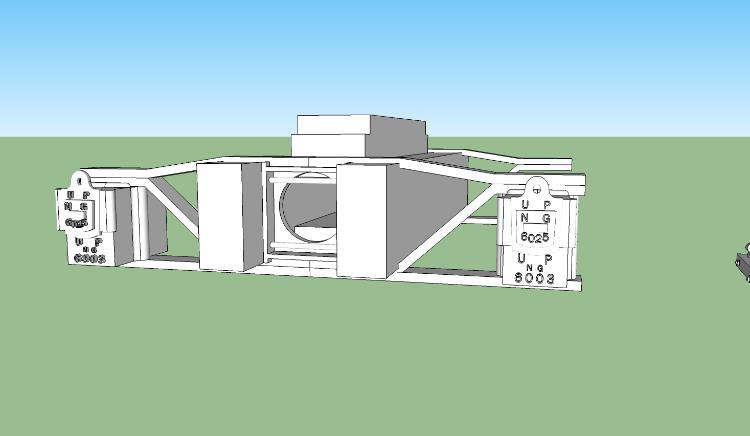 I've drawn up a new version based on what Phil posted and augmented by some photos Randy Hees sent me (yes, he has the trucks at NSRM!). I was wondering what the deal was with the UP Journal Boxes prior to his photo and drawing, and now it seems pretty clear: UP didn't care about using MCB standards with their narrow gauge properties. I suspect that the non-UP built trucks (Litchfield and Peninsular) had MCB journal boxes when new, but may have received the UP journal boxes during later rebuilds...so I can create a new version of the Litchfield trucks with these UP journals and keep the version with the MCB journal boxes as well. Obviously, new information means delays, but I think the results (more accurate trucks) are worth it. |
|
Michael, this is looking great. Certainly, no hurry at all, the result is well worth waiting for!
thanks! John
John Greenly
Lansing, NY |
|
I second John's exhortation!
Now . . . just one more thing. Those Litchfield trucks. They had outside brake hangers as part of the arch bar frame, would be correct for DSP&P days even into the 1890's. But by the time the C&S was formed, they had been removed and the brake beams were hung by chain from the car underframe. Is it possible to do two versions of the Litchfield truck, one with outside brake hangers, as in your Shapeways On3 truck, and the other with the brake beams suspended out by the little struts as in your first type C truck drawing? The latter would imply brake beams hung from the underframe. Just a thought.
Jim Courtney
Poulsbo, WA |
|
In reply to this post by Michael York
1:1 Scale in Nevada.
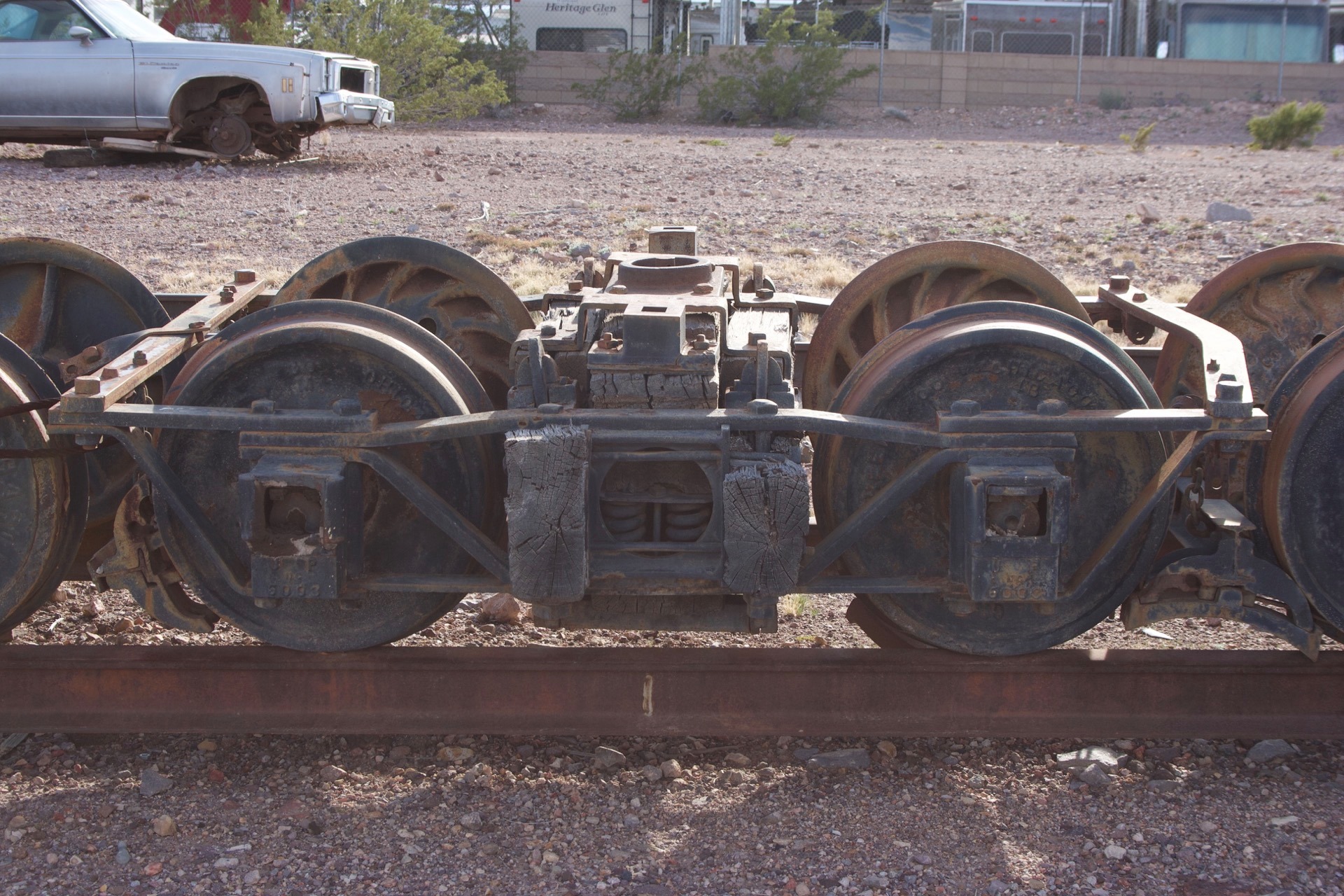 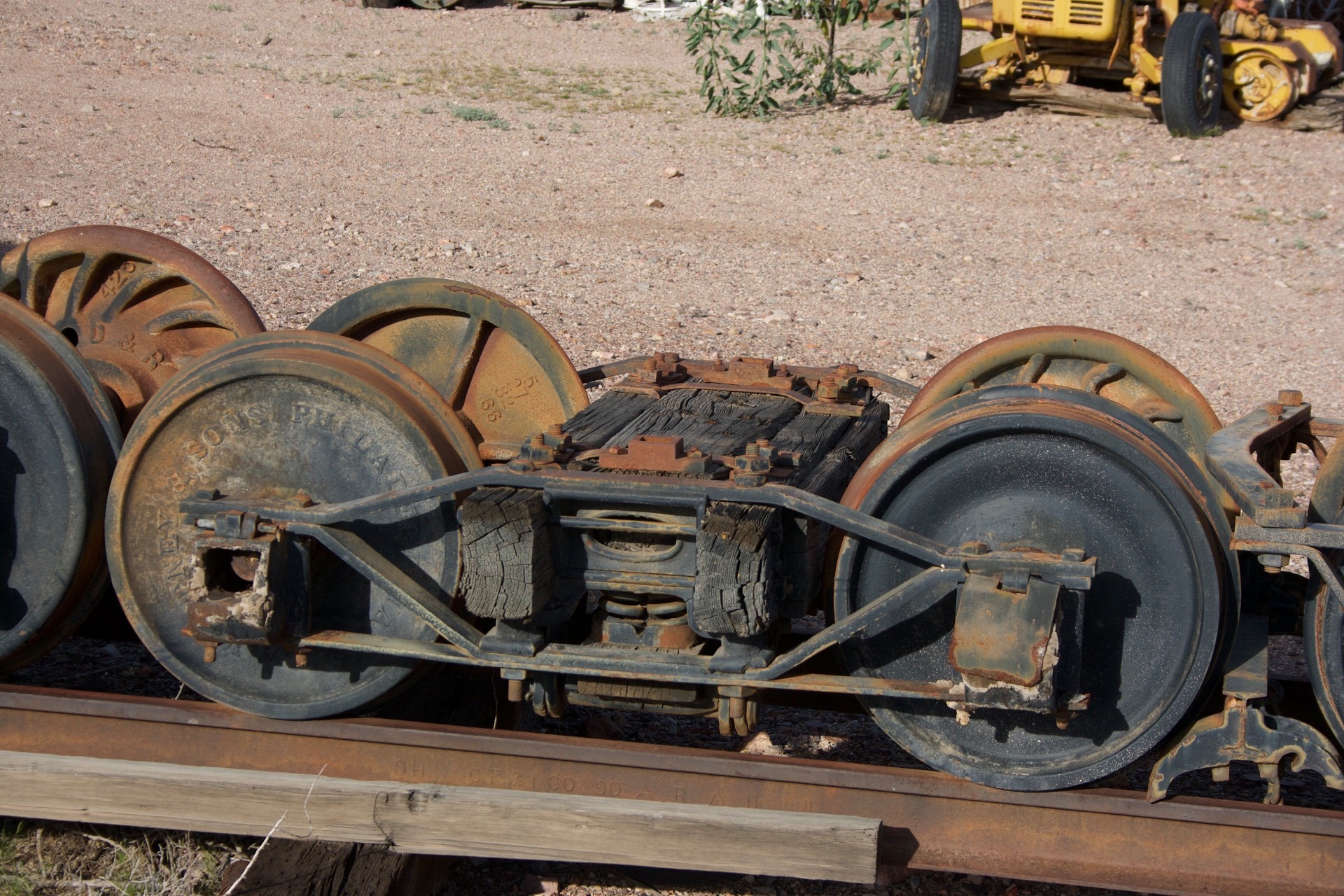
|
|
Those are the two trucks I measured in 1981/82. Where are
they today? Phil |
|
Nevada City?
|
|
Been rather busy for the past few weeks...not much modeling...but I did a little this evening...
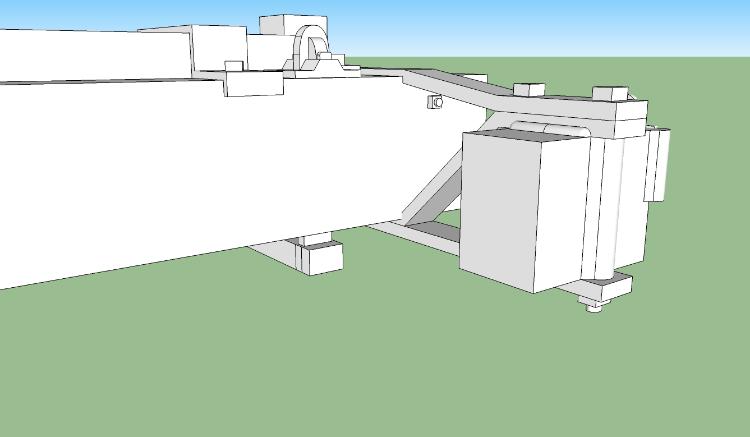 Thoughts on what the lower hanger bearings should look like? |
|
Sorry Michael, I haven't a clue.
Jim Courtney
Poulsbo, WA |
|
In reply to this post by Michael York
Your sketch looks pretty good. I've attempted a sketch in openscad.
Its taken a while, since I'm rusty with the program. I don't have and fillets or other refinements. His my understanding of the swing link mechanism: 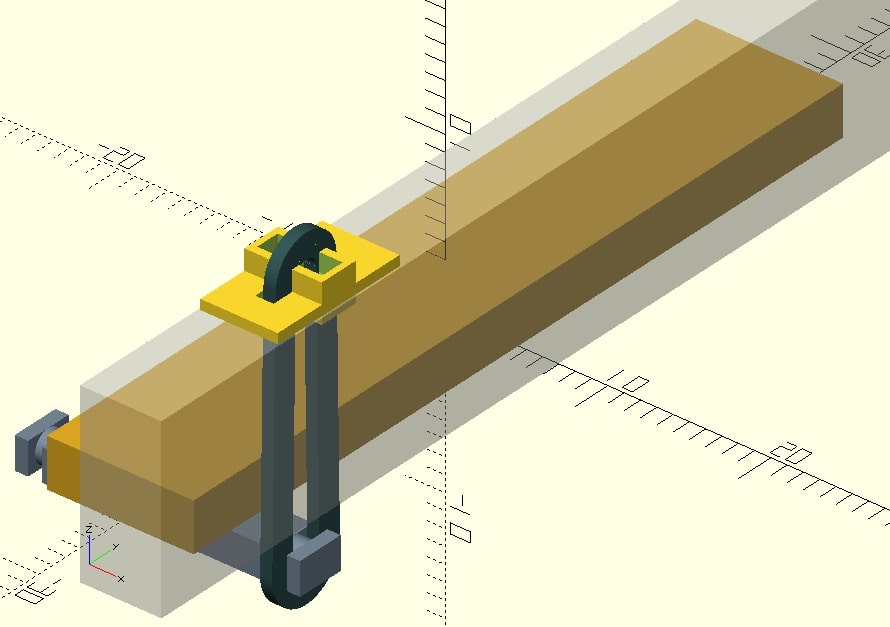 Hope this helps. By the way, your upper swing pad bearing is much closer than my rendering. Phil |
|
In reply to this post by Michael York
Michael, I've looked through a bunch of photos of wrecks trying to find one of the underside of a type C truck. Sad to say, this one (of a 27' UP boxcar) is the best I have found:
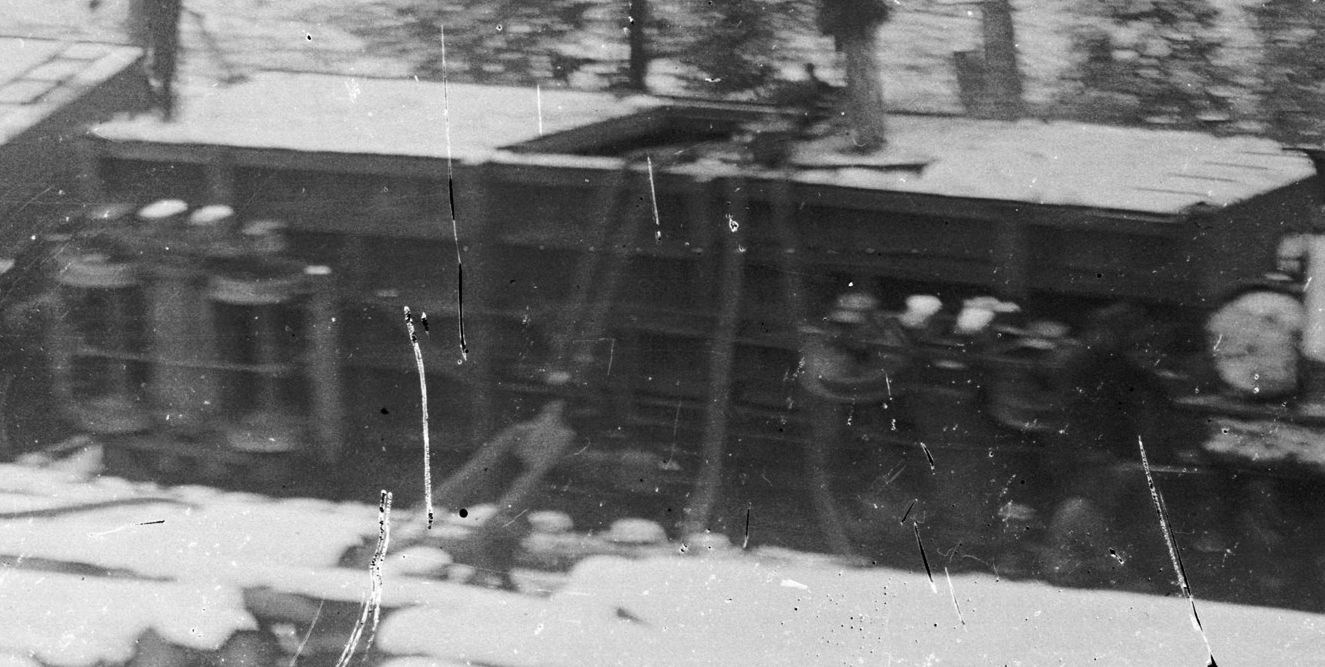 Too bad that guy didn't focus his camera better! You can see that there are two bars, the lower swing bearing bars, crossing under the spring plank as expected, connecting to the bottom end of the swing hangers. I'd venture to guess that the upper one on the lefthand truck doesn't look like a round rod, but looks flat, so indeed a square or rectangular bar. I believe there is one other thing to see on the lefthand truck. The bottom surface of the spring plank appears to me to project beyond the bottoms of the transoms (that is, below the transoms if the truck was upright). And I think you can see that this truck has "swung"-- the weight of the truck has pulled it downward to the end of the range of swing movement, so there's no space between the top end of the spring plank and the truck side frame, but there is a space at the bottom end. That's kind of neat to see. Here's something a little better, the best photo I've found of a C/UP truck from the side (of a Tiffany reefer): 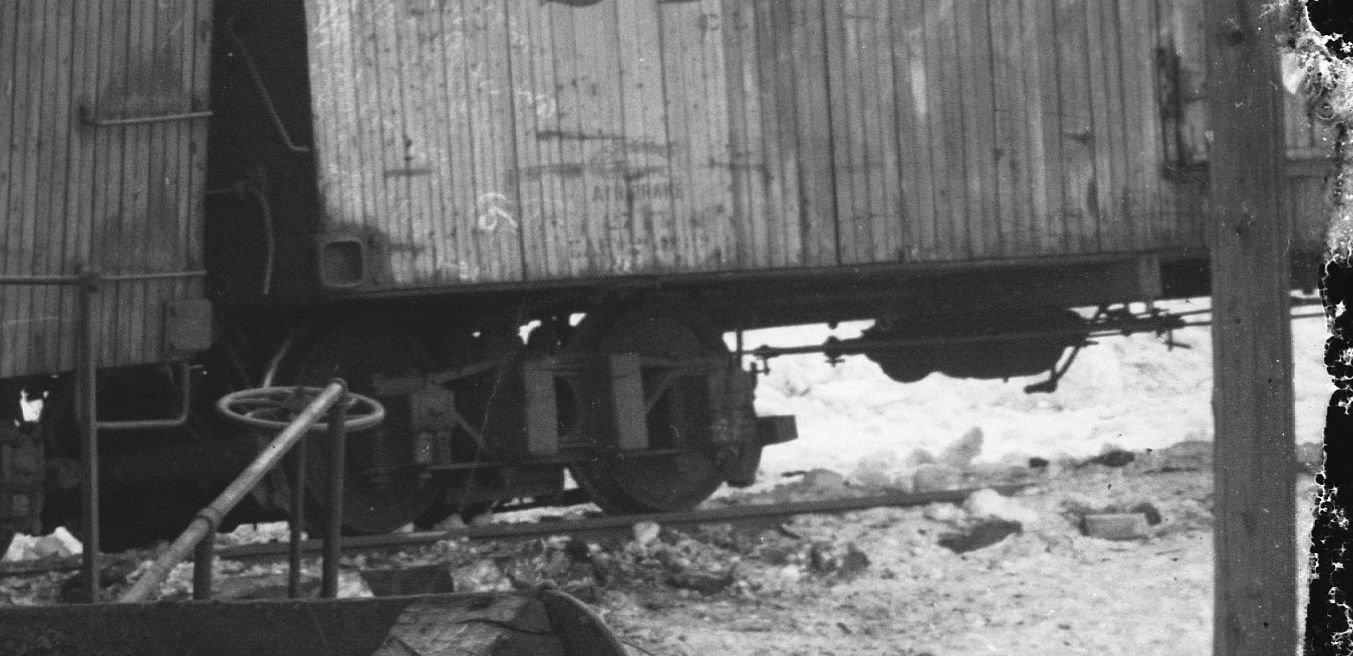 Now you can definitely see that the bottom of the spring plank is below the bottom of the transom beams, and I think you can see that the bearing bar under the spring plank is square or rectangular in cross section, not round. Scaling from a 11" height of the transom beam, I would estimate that both the projection of the spring plank below the transom, and the thickness of the bearing bar, are about 2". I think these are consistent with Phil's drawings and measured dimensions, as he explained them in his second post. I see that Phil, in his latest post, has drawn the bearing bar as rectangular, and that looks good to me, compared with this photo. Hope this helps some, John John Greenly Lansing, NY
John Greenly
Lansing, NY |
|
Time to revive this thread...
 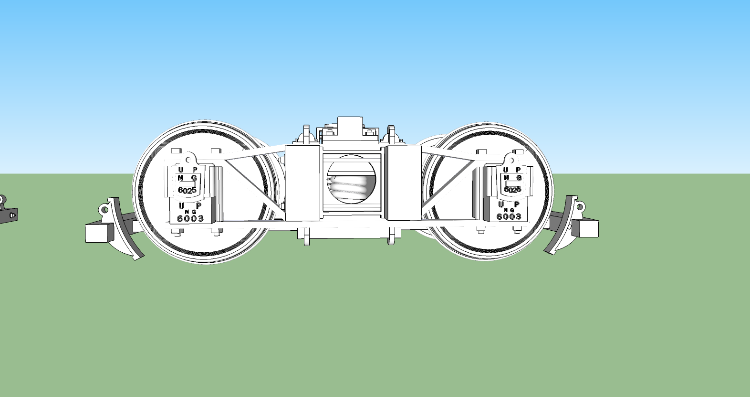 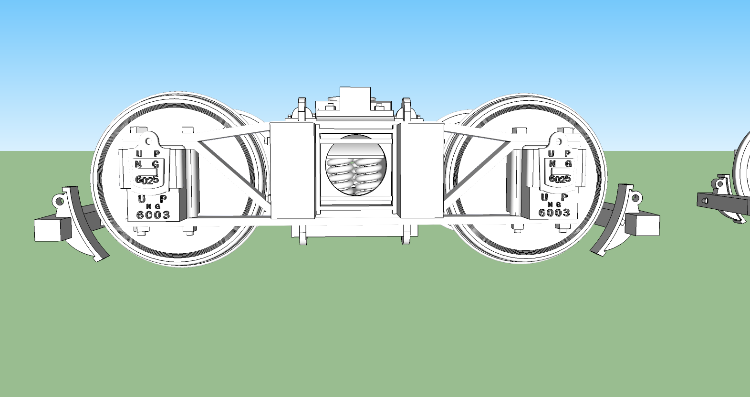 I ended up getting busy...my marriage ended, which really affects hobby time! In the aftermath, my son announced that he'd never really liked trains, which I told him was ok, and a couple months later, I noticed he was reading an N-scale book every morning in his room. Since he expressed an interest in having an n-scale railroad under his bed, I jumped at it and have been working on that plus some HO cars for months. Now, I'm getting back to my On3  Thoughts/comments on my trucks? |
«
Return to C&Sng Discussion Forum
|
1 view|%1 views
| Free forum by Nabble | Edit this page |

